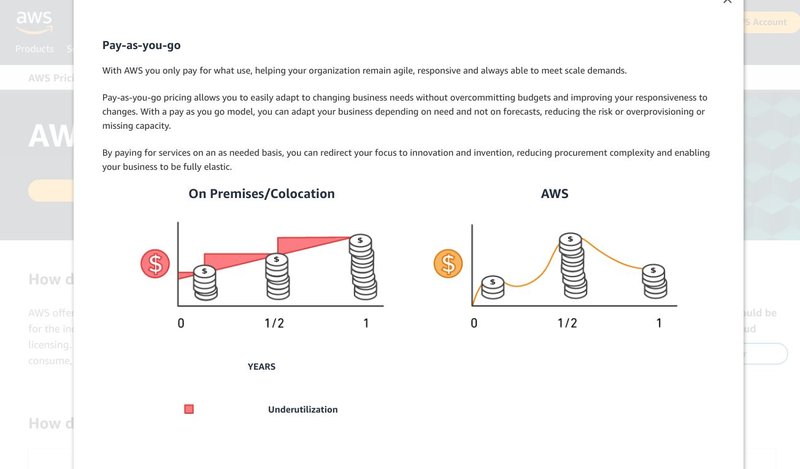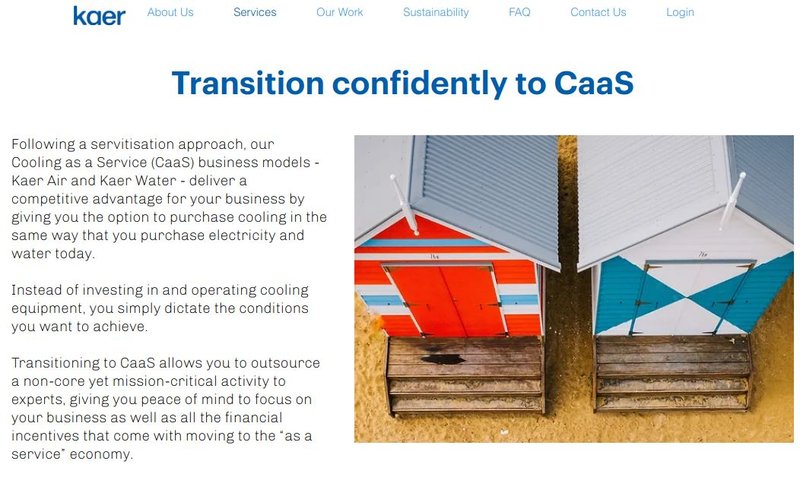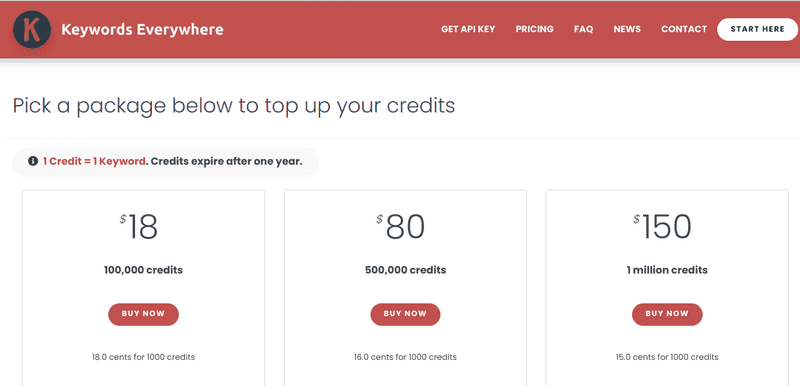Pay-Per-Use Billing Model - Meaning, How It Works & Examples
Feb 28, 2024
Consumers are exploring pay-per-use as a more equitable pricing model for their subscriptions. Learn more about pay-per-use, its uses cases, and benefits.
According to research, consumers in the USA spend 2.5 times more on subscriptions than they estimate. This is not surprising considering that 42% of those surveyed said they forgot about some subscriptions and kept paying for them even though they no longer used them.
It's also not a surprise that consumers are reviewing their needs and reducing the subscriptions they are paying for. Businesses are looking at fairer and more equitable pricing models to retain the same customers.
One model that's gaining traction is pay-per-use pricing.
Is pay-per-use the key to longer customer lifecycles? More importantly for businesses, is pay-per-use a sustainable pricing model?
Let's find out.
What is the pay-per-use model?
Pay-per-use (PPU) is a consumer-centric pricing strategy where customers only pay for their effective use of a product or service instead of buying for ownership or making fixed recurring payments.
Also called pay-as-you-go (PAYG), consumer-based pricing, or metered billing, pay-per-use bills customers based on what and how much of a product they have actually used, not what you supplied or made available as it is with subscription billing.
Since consumers avoid paying for what they may not use, they find pay-per-use a fairer pricing model. It makes it easier to evaluate the value they are getting against what they are paying.

Like subscription pricing, pay-per-use pricing promotes access over ownership. For example, instead of paying a significant amount for an industrial air conditioning system, a facility will have it installed on their property and only pay to use it. The manufacturer retains ownership of the boiler and is responsible for maintaining it.
When customers buy the air conditioning system, they need cooling, not the system itself. A manufacturer that produces these air conditioning systems might charge customers for using the boiler or, if it can find a way of metering or tracking it, for the energy they produce with it. This is the premise of the CaaS (cooling as a service) model that companies like Kaer follow.
How the pay-per-use business model works.

When you use a pay-per-use billing model, customers only pay for delivered value or their effective use of the product or service. You bill customers using metrics like:
how much time they used the piece of equipment,
How much energy they produce using the product or
features of software the customer used in a timed session.
Therefore, using the pay-per-use billing model entails determining how you will measure usage, which will be your unit of usage. After that, you have to decide how much you will charge per unit of usage, which should consider your internal costs, revenue goals, and the average market prices.
You will need automatic billing software to track usage, trigger billing events, send invoices, and set up automatic payments.
The pay-per-use model refocuses the consumer's mindset on their needs instead of the product. It realigns their relationship with value, precisely why they buy the products they buy.
Using our example, an industrial air conditioning system is expensive equipment that a small business may need more funds to buy. But they may be able to 'rent it' or pay to use it.
Such an arrangement works for both parties. The air conditioning system manufacturer will increase its revenue, and the customer will save on maintenance and repair costs and won't have to struggle to raise money to buy the system.
Billing customers this way allows customers to pay only for the features they need. Customers can tailor their spending to their needs, meaning they can vary their usage and spending from month to month.
When do you collect payments in a pay-per-use model?
One of the advantages of the pay-per-use model is the billing flexibility. You can choose one of three ways to bill customers:
Prepaid plans, where customers pay before using the product/service. This works for businesses and customers; businesses do not have to chase payments while customers can plan their expenditures and know precisely how much they will spend that month.
Post-paid plans, which let customers pay after they have used the product. Though this one is not ideal for businesses for the extra burden of chasing payments, it does encourage customers to spend more than they would on a prepaid plan.
Hybrid plans that blend the characteristics of post and prepaid plans. Customers are billed post-usage but also have the option to subscribe to a prepaid plan.
The pay-per-use monetisation model suits any product you can parcel into saleable units. Examples include software, cloud storage, audio and video content, and other digital products.
The PPU model also works for physical products if you can track their use. This is now possible through AI and IoT tools that allow businesses to remotely monitor how their product is used.
Let's look at some use pay-as-you-go cases.
Pay-as-you-go billing example 1

With pay-as-you-go pricing, the more you use a product, the more you pay and the less you use it, the less you pay unlike the subscription business model where you charge customers a fixed recurring fee.
Customers either buy credits that will deplete with usage of the product or pay only for what they have used in the preceding billing period.
Using the example of an SEO tool like Keywords Everywhere, a digital marketer will buy credits that will be deducted every time they use specific features. The unused credits roll over to the next month but expire after a year.
Pay-as-you-use pricing example 2
As you can imagine, digital products are more straightforward to bill than physical products using the pay-per-use model. For example, with cloud storage, you charge a customer for the storage they have used.
Lighting fixtures are much harder to bill per use as they require the physical installation of intelligent lighting components and site visits for repair and maintenance.

In this case, a customer wants just the lighting, not the light bulbs and wiring. Instead of ordering lighting fixtures and hiring an installer, they want light that they order in lighting hours.
While pay-per-lux lighting company Trilux uses a hybrid model that combines recurring monthly payments and usage-based pricing, customers still enjoy reduced charges when they use less lighting.
Why consumers love pay-per-use pricing models
At the beginning of every year, many of us sign up for a gym membership, determined to exercise more and get fitter. But we quit the gym a few weeks later and many months away from the toned body dream that pushed us to buy the subscription.
We don't cancel the gym membership because we convince ourselves we still need it and will soon be lifting weights again after blocking out time from our busy schedules. Only we never do, and after a few months, we completely forget about it.
The pay-as-you-go model is more flexible for customers who can better control their spending. Using our example, you only pay for actual gym visits. This way, it is easier to determine the value you are getting because cost is directly tied to usage.
Customers may also prefer pay-as-you-go arrangements as they don't lock them into an ongoing subscription with perks and features they don't need.
In some ways, the metered usage model is more affordable for customers. They don't have to spend a lump sum to buy a product, incur repair and maintenance costs, or make subscription payments that don't match their usage.
Subscription model vs pay-per-use model?
Subscription model estimates how much product a customer needs in a given month and then charges them a recurring fee for the supply. With the pay-per-use model, customers only pay for actual usage.
Subscription fees are paid in advance before the supply of the product or provision of service. This means that even if customers don't use or need the product for that month, they are charged anyway.
From a consumer perspective, this is a wasteful way to spend money. Paying only for what you use, not what they can get, is thriftier.
Estimating how much you need, especially for recreational products, is hard. Using the example of a gym membership, sometimes you don't feel like exercising. Other times, you don't have the time because you are travelling or work keeps you busier than usual.
Should you use the pay-per-use billing model?
The customer benefits discussed above suggest that the pay-per-use model is more favourable to consumers than businesses. However, if well-executed, the billing model can lead to more revenue.
Because customers know they will only pay for actual usage, it is easier to explain your value proposition. Your conversion rates will be higher, meaning you will spend comparatively less on marketing.
Again, since customers are not locked into a subscription agreement, they don't have to cancel if their needs drop. They can come back anytime or increase their usage as their needs grow.
Customer retention is a persistent problem for many businesses. One of the reasons for this is what consumers consider exploitative billing processes that leave customers feeling cheated if they don't use their subscriptions.
Simplifying billing by asking customers to only pay for actual usage improves their satisfaction levels, which boosts their loyalty to the brand.
So, even though a consumption-based billing system makes it harder to forecast revenue, it can lead to a higher customer lifetime value is higher. Therefore, the pay-per-use billing model greatly benefits you and your customers.
Optimise revenue with pay-as-you-go billing.
Pay-per-use has excellent benefits for you and your customers. Whether you are selling SaaS tools, cloud storage, or other digital or utility products, using a usage-based pricing model helps you lure customers by removing the increasingly intimidating commitment to a subscription plan.
The lower upfront costs help to attract customers, while the flexibility to only pay for what they use enhances their loyalty to your business and increases their lifetime value.
The pay-per-use model's fairer and more flexible pricing approach encourages usage across your customer base, accelerating your business's revenue growth.
As you do with subscription billing, you can collect automatic customer payments. For this, you will need capable automatic billing software. And Intasend is your best option for the software in the Kenyan market.
Book a demo to see our automatic billing software in action and explore your options for metered billing.

